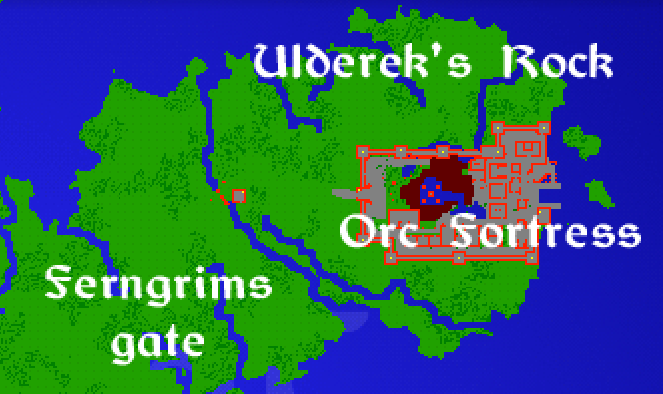
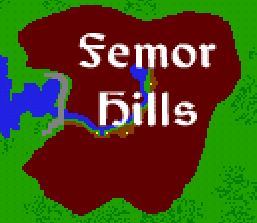
North of Kazordoon was the new Fermor Hills area which was a series of plateaus stacked on top of each other. Developed by Wastl and Conaria, this was an interesting area which changed repeatedly in the early years. Later, in game lore would state that the residents of Carlin had mined the hill for resources so many of the old tunnels from those days still exist. This was ironic because the first version of the area appears to only have a single pathway in, none of the mine like paths which would exist in later revisions. Also absent was the Goblin monsters which this place would become famous for, as they did not yet exist.
In this first version there were no ramps leading to the upper levels like today. Though it is likely the surface had the same grass and trees, and more plateau style hills, we really don't know for sure. All I was able to find for this short-lived version was that there was a simple path on the west side which ran along a waterway into the hill. Based on the map it looks like these may have led above at several points. It is unknown if the Cyclops Lake or the underground area existed but from my experience, I think the lake was there, but the underground area was not. I have been unable to find any screenshots from this time and no maps of the upper level exist. Perhaps someone who explored this area in the early days could shed some light on this?

Directly east of Kaz was the famous Orc Fort called Ulderek's Rock, which was developed by Muesli. This dungeon would become Tibia's newest high-level dungeon.
The path to this area was through the Kaz Dragon towards a huge but mostly empty map of water inlets and very little else. This largely baren area would become a popular spot to train, especially the norther edges which had small wolf spawns and were far off the beaten path. Heading northeast from the dragon would take you to the entrance of Orc Fort which was guarded by many types of orcs. The orcs were already here from an earlier update but now the area would have structures to explore and more spawns to hunt.
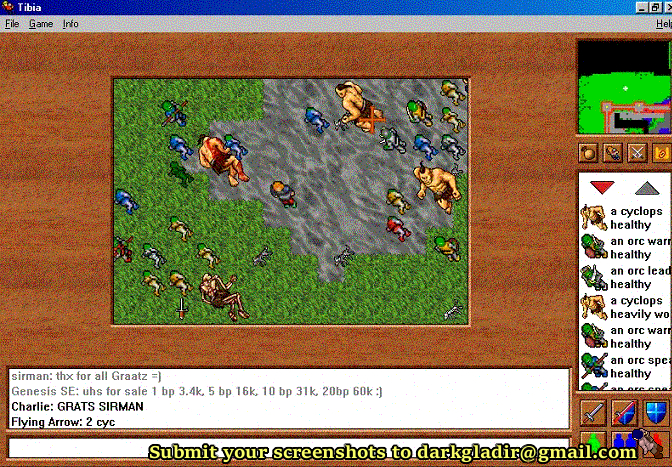
Past the two-story tower at the entrance was a massive castle with high walls and an open door on the west side which led inside. The castle was filled with orcs and offered one of the densest dungeons of monsters yet. This area was a powerhouse, providing players with really good experience and crazy loot. Despite the high experience, the danger was not as much or mistakes as costly as Deeper Fibula, so players flocked to Orc Land as a safer alternative.
One of the interesting bits of history of the castle is that it was once the battleground of the war of creation. The previous castle was destroyed, and the current castle was rebuilt and named after its original founder. Rumor was his body lay somewhere buried in the rock. Most wouldn't have known this bit of history and would have come to this castle for two reasons only: to become rich, and power level.
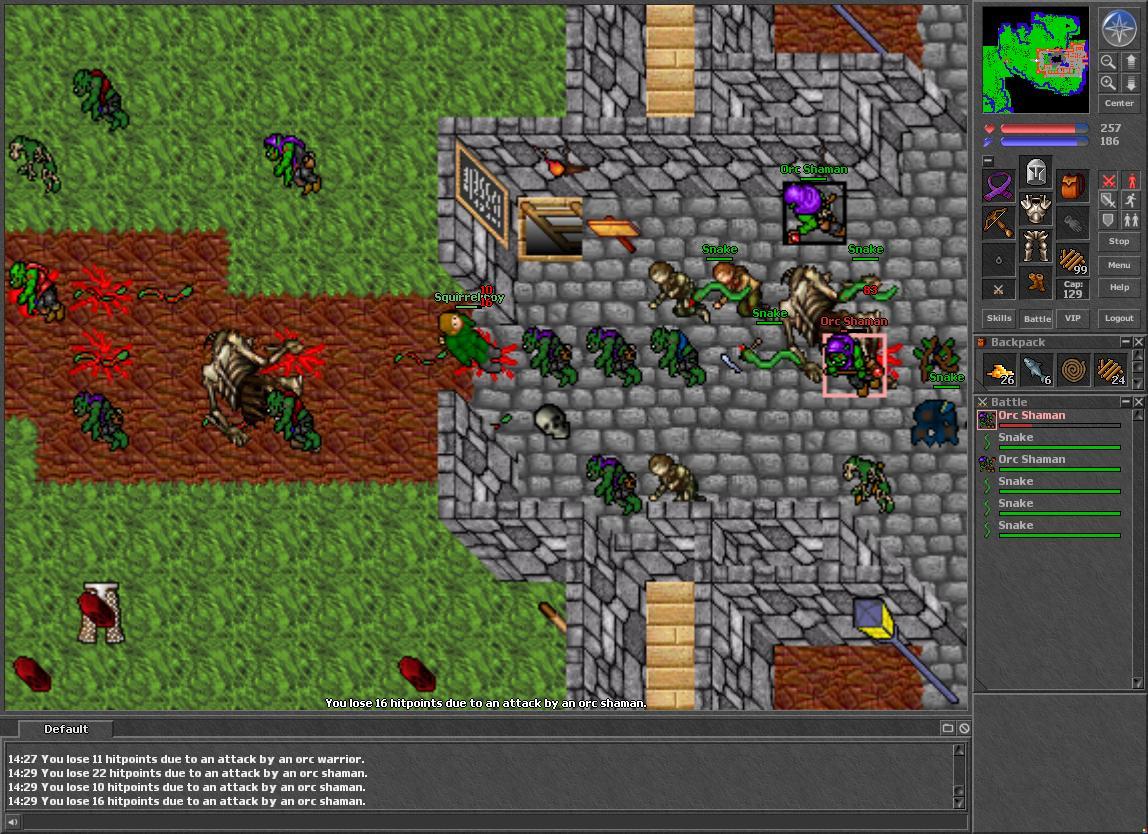
Over the years the basic shape of this addition has only changed a little from its launched state. When you first approach the area there is a small, guarded pass that is blocked by a river flowing the entire length of the land so you can only cross at the choak point of land. Orcs guard the entrance including the powerful Orc Berserker. From here the remaining area around the castle was very empty green grass and trees. Approaching the castle entrance to the west, you would see a huge open entrance right.
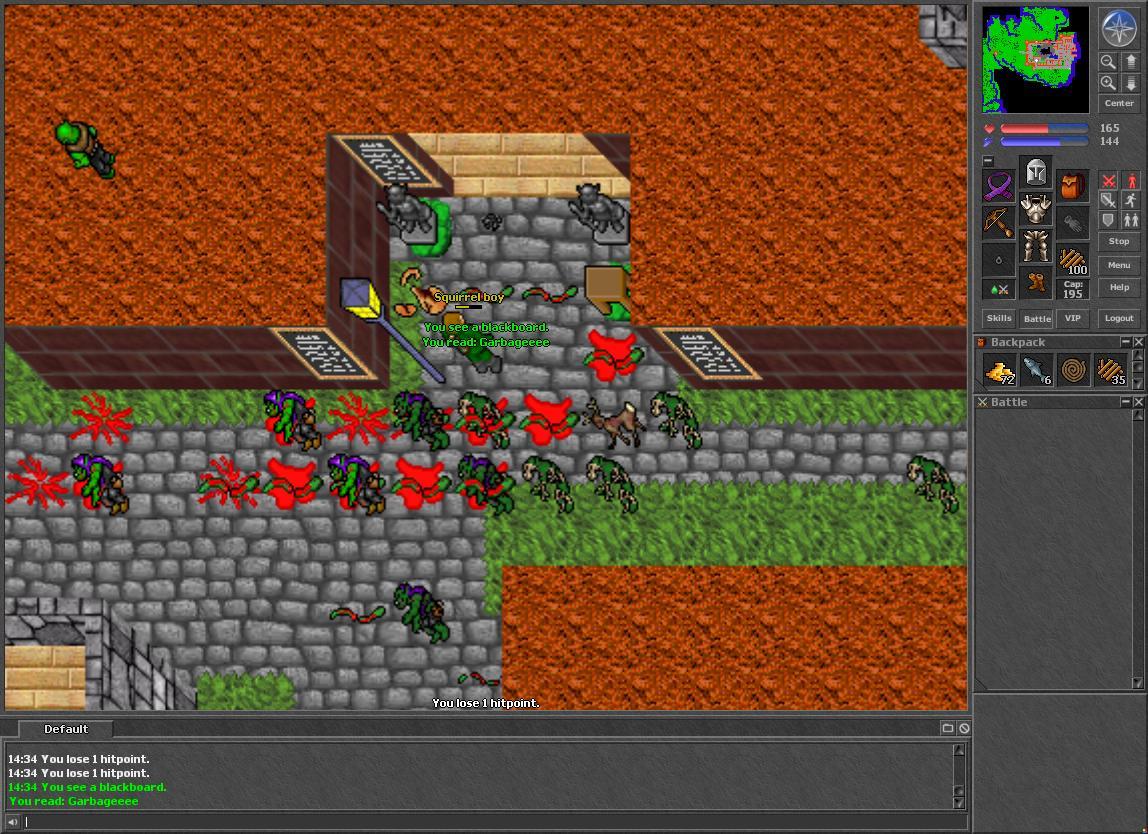
The surface was made up of small buildings which spawned more orcs. These extra rooms provided only a little bit of cover as most of the creatures would attack you at once which made the surface level dangerous if you were trapped. Once you found the spot you wanted to hunt it was easy to keep the backspawn under control, but it was a hard dungeon that provided no mercy should you die as you would need to run all the way back to the fort and fight your way to your body. Getting disconnected from the internet was also a danger as you would log in and have to open all your backpacks for healing supplies while getting mobbed by freshly respawned monsters.
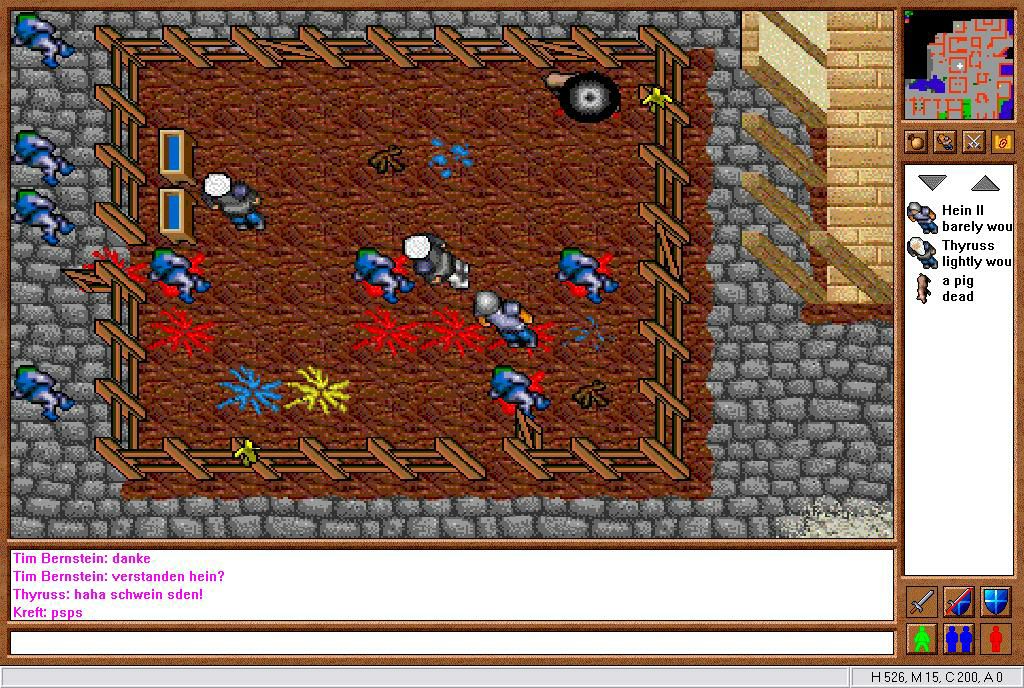
The castle offered so many orcs that players did find it a challenge to clear a way inside. Once they got through the hard-hitting orcs and large number of spearmen they could head to the safer parts of the castle. Some of those safer areas were the high towers which surround the castle with a second layer of single square paths walkway a level above where you would be attacked by significantly less creatures. You could gain access to these by climbing the ladders in each of the towers, which could be found by going through an opening just inside the first main area at several points.
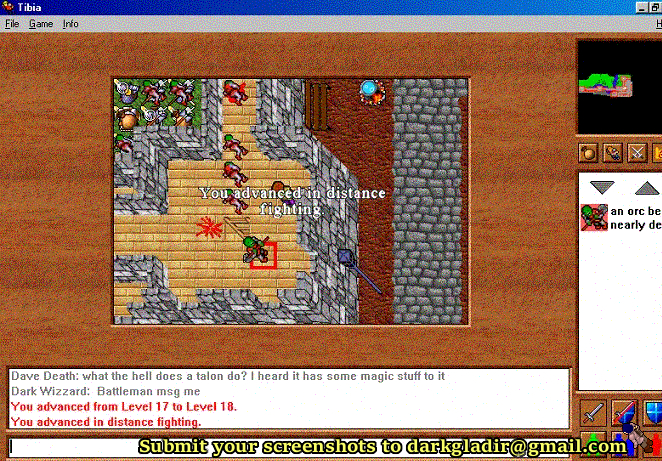
Hunting the walls was more geared towards solo hunting due to the confined space, but it was considered the best spot in the area as you could encounter mostly Orc Berserkers there which were prized for their halberd drop. The walls were also a safe way to connect to the spawns in the back which offered a wider space for distance players to run monsters.
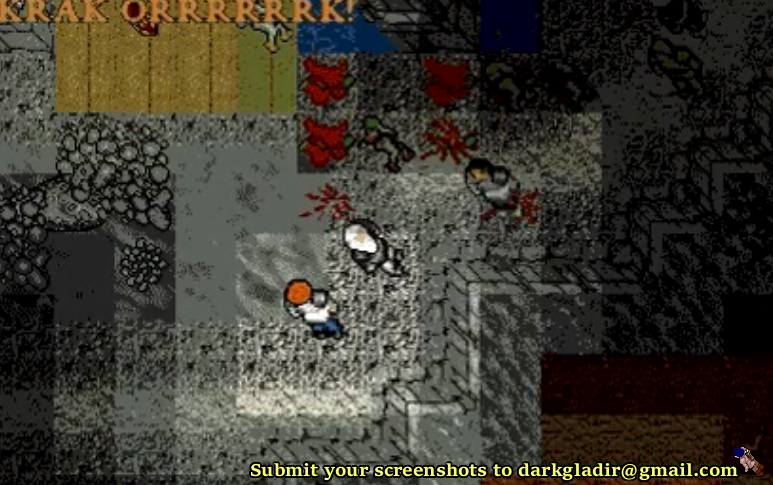
Players could also hunt the center compound which was a two-floor tower with an Orc Shaman by the ladder and an Orc Leader on the second floor. This floor also had crates and other junk which was pushed around by the Orc Leader and other lesser orcs that spawned there. Players hunting this area would also swing east around the tower, killing the Orc Shaman, Orc Berserkers, and Orc Leaders before returning to the tower. Most players hunted either the walls or the center compound as they were the safest and most profitable areas to hunt. Though these areas were considered the best spawns, there was plenty of other places inside to hunt, even if you encountered less Orc Berserkers.
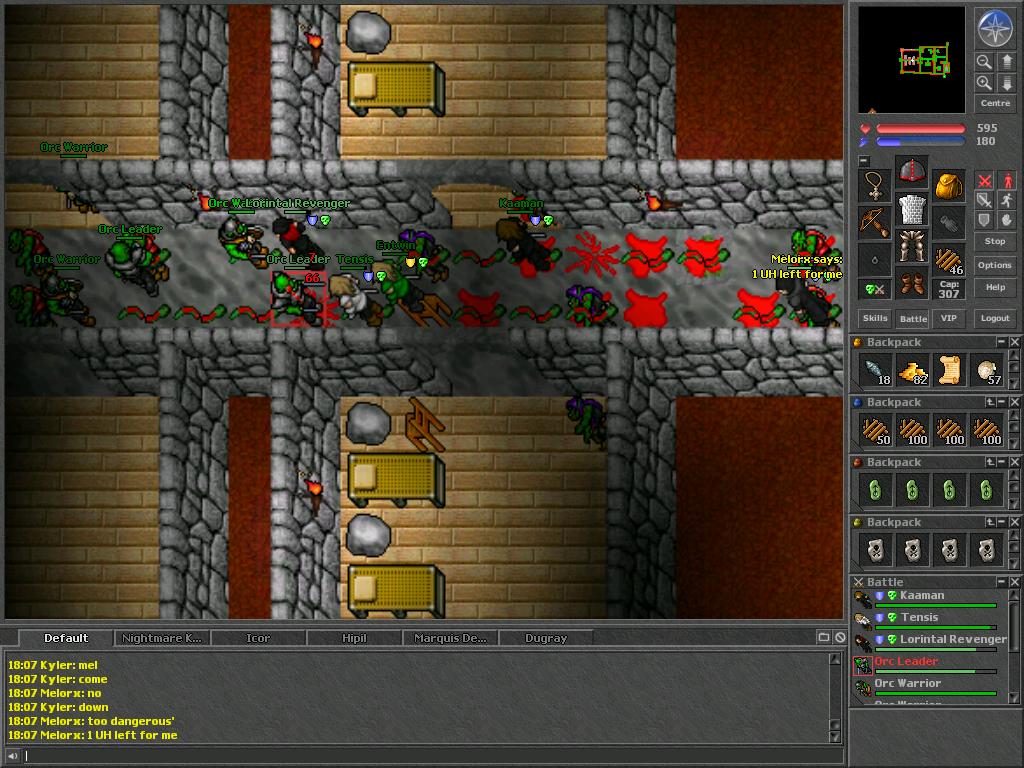
Some of these spots were the dungeons below the surface. These were hunted not as frequently as the above surface spawns as the enemies were denser and more difficult to safely separate. Single target hunting was still an important part of leveling due to how low level every player was. To get to the dungeon below you could take the ladder down that was just inside the entrance or at other spots inside the wall. The layout below the castle was likely the same as what we see today with several halls around the perimeter of the castle walls which spawned different orcs. The greatest number of orcs would have been found just east of the entrance ladder in a series of 6 rooms. Passing through this area led to an interesting grassy area which had white mushrooms spawn and the areas only Beholder spawn. Continuing east brought you to a staircase leading down to the floor below. I can't remember what this looked like, but I think it was a room to the east and west with the west room looking like it does today. There was something north, perhaps the same impassable set of the doors that there is now. I do recall a Dragon being down here and it was often roped and lured to the surface as most of the between level access was via ladders. Other rooms around the upper hallway and middle rooms existed but none were particularly notable except for a room above the 6 rooms which had a drop-down hole that was safe to rest. In the southeast corner of this area which only could be accessed from the surface was the Orc Brewery which spawned 3 Orc Berserkers at once which were tough to kill but was very profitable to hunt once you cleared it.
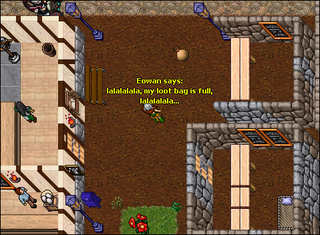
Killing the strong orc berserker would occasionally drop the treasured
![]() halberd which was a heavy but very profitable two-handed axe type weapon which sold for 400gp each. Players would often create loot bags which they would push back to town stuffed with these, and other heavy equipment which were generously dropped by the orcs. It was not uncommon to collect
huge sums in these bags but pushing them back to town was
risky. Though other players couldn't pick up the bags due to their outrageous weight, they could destroy the bags or try to push them to their own depot. Of course some players would find ways to accidently destroy their own lootbags. Players learned to hide their bags closer to town and make trips to sell the items inside.
halberd which was a heavy but very profitable two-handed axe type weapon which sold for 400gp each. Players would often create loot bags which they would push back to town stuffed with these, and other heavy equipment which were generously dropped by the orcs. It was not uncommon to collect
huge sums in these bags but pushing them back to town was
risky. Though other players couldn't pick up the bags due to their outrageous weight, they could destroy the bags or try to push them to their own depot. Of course some players would find ways to accidently destroy their own lootbags. Players learned to hide their bags closer to town and make trips to sell the items inside.
Hilariously the launch of this area also added an unintended glitch in the form of a land bridge which connected Orc Fort with the main continent. This land bridge allowed players to bypass the dangerous Dragon and push their loot bag a safer way. To take advantage of this you pushed your bag to the southern edge of the water by the Greenclaw Swamp Troll spawn and look for the piece of land that cut across the water. You simply walked across the single misplaced land piece and carry on to Thais. GMs found out about this trick and began punishing players for abusing the path but it was hard to argue that it was a bug as it was built right into the map. A quick update the same day was released which fixed the mistake and ended the easy path.
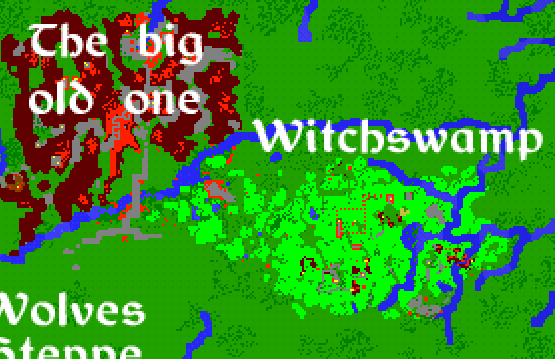
Just southeast of Kazordoon, the Greenclaw swamp was updated with an east expansion. The huge addition east of the troll area made this into a formidable dungeon, creating Tibia's first expansive swamp content. Players would have to traverse a maze of underground tunnels, swampy surface, and above ground walkways to make their way deep inside. You may also note that the blood herb area is the farthest the swamp extended at this time. The Amazon camp and Black Knight villa were still an update away and the upper strip of land near the stream was barren.
The lore of swamp if you spoke to NPCs is that this area formed because many of Tibia's waterways connected here, creating stagnant pools and loamy fertile grounds for plants and poisonous creatures to thrive. Due to this convergence, you could fight many of Tibia's basic creatures like snakes, rots, slime, and beholder here.
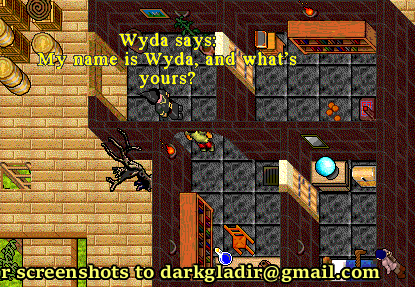
Also added to the swamp was the Witch monster which inhabited deep within the swamp on top of a hill. Just north of this hill was NPC Wyda's house which you would encounter on your way to the Blood Herb. Key 5000 to the house could be found in a coffin under her house though it wasn't necessary to grab it. To get to the house you would need to travel through the swamp and cut jungle grass with a machete which was a new mechanic. The grass would grow back over some minutes so you had to always keep the weapon on you or risk becoming trapped. Wyda the witch would mill about on the upper floor of her stilted house above the swamp and answer questions about a variety of topics. She was hiding out in the swamp after having fled Carlin. The enigmatic witch was a worshiper of Zathroth, and disliked monarchal authority, but if you asked her about potions she would guide you to find the Blood Herb which could be found inside the swamp. This rare herb sucked the life force out of nature and concentrated it within itself, making it a valuable item for witches potions. You could also see a Wooden Wand inside her locked room which was a rare, though you couldn't access her room.
The Blood Heb was the great prize of the area, and it would spawn once a day in a dead tree. This tree was further within the swamp, guarded by a Giant Spider, and could be found by simply exploring the area.
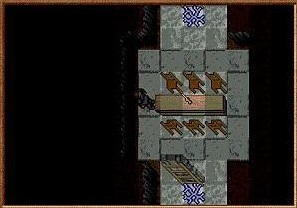
Just south of this area was a single Witch spawn around a camp fire and table in a secluded spot in the swamp. Interestingly you could access this area by a strange loose stonepile hidden under a tree which would take you to a secret underground meeting place. A further Witch spawn was east of the Giant Spider which could be traveled to by an underground tunnel which had stairs. This tunnel connected three of the landmasses in the area and also marked the end of the swamp content for this update.
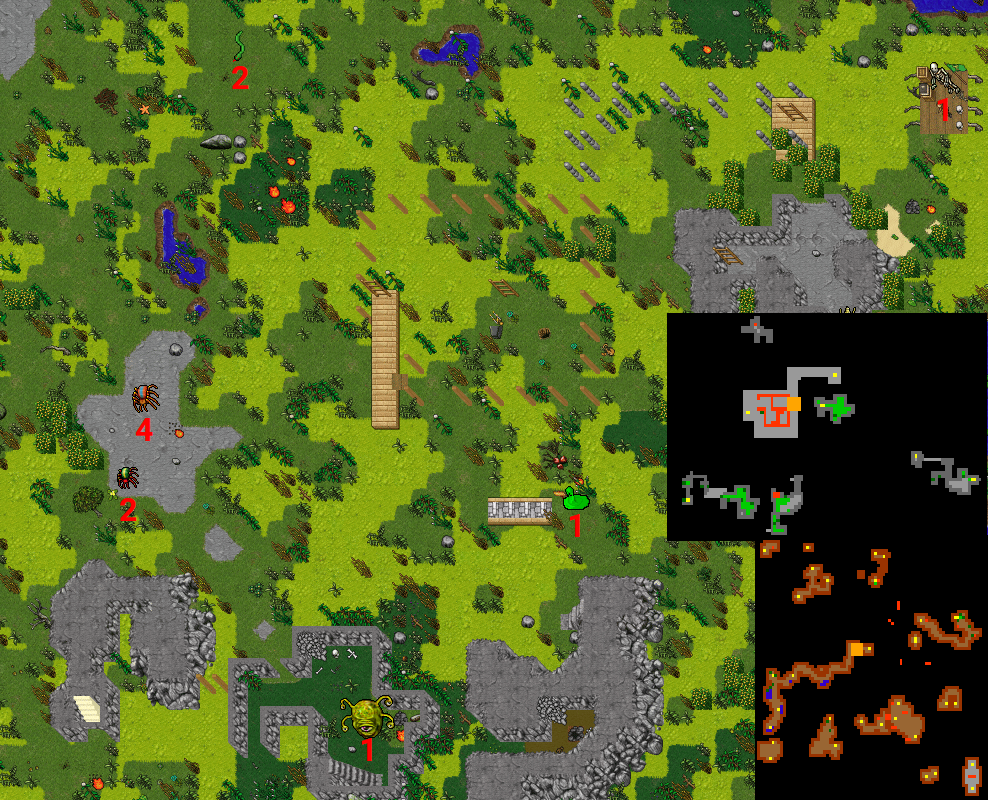
The swamp was architecturally interesting in that you had to traverse below, above, and at ground level to explore the map. Traveling on the surface was made more challenging by the jungle grass which you had to cut down with a machete which would grow back after some minutes. There was also some paths above the surface which looked like a bridge on stilts that spanned over the swamp. Unlike other areas were you could map click to get to a destination, exploring the swamp had to be done manually and it was easy to get lost. Those who relied on the map to figure out where to go would have a tough time as it wasn't obvious how to travel through the area.
This also made it a good place to hunt as PKs avoided all but the most popular spots as it was too much work to chase people through the swamp. Exiva might tell you what direction a person was, but it was useless in a maze.
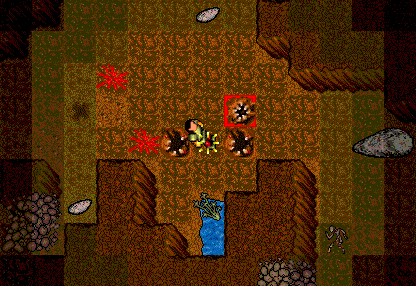
Some of the more notable hunting spots was the Rot rooms below the surface which provided an out of the way spot for you to kill creatures without being overwhelmed by too many. Another spot was the Beholder spawn on the surface which had one or two of the monsters tucked inside a walled cave. I recall getting my first Beholder Shield from this spawn, a video of it can be found here.
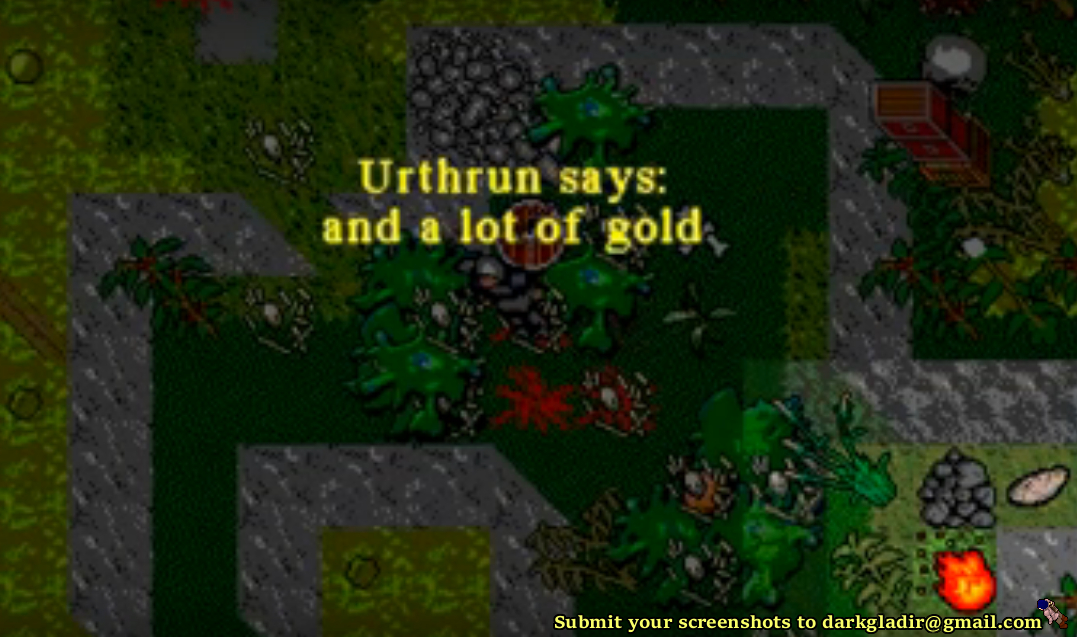
I personally found this whole area fun to explore and was a nice departure from other areas which offered only small blocks of interest in an otherwise bland map. The complexity of this map is inspiring and there are only a few other places in Tibia which would be this difficult to make. However, the challenge with areas like this as you end up spending as much time trying to find your way back as you had to get to where you were. Until you learned an area it might take several tries to find the shortest route to a spot. For those who loved to explore it was a great way to spend an evening even if it wasn't filled with treasure or experience like everything seems to be today.
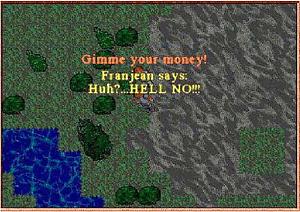
Outlaw Camp was created just south of the desert, taking over the top half of the small land mass mostly surrounded by water. Created by Morridin and phoenix, the area was to be the place of Tibia's criminals, taking refuge away from the laws of the other cities. This addition provided Tibia with a new monster, the Wild Warrior, though the human looking monster existed much earlier in the SPR. The buildings in the camp were not very exciting and even H.L. didn't exist for NPCs in the camp. From what I can tell it doesn't look like any underground areas exist yet. There was a natural rock tower to the northwest though I don't know what spawned there. Even if the area lacked any decent features yet, the concept was an excellent building point that just needed a more experienced hand to develop.